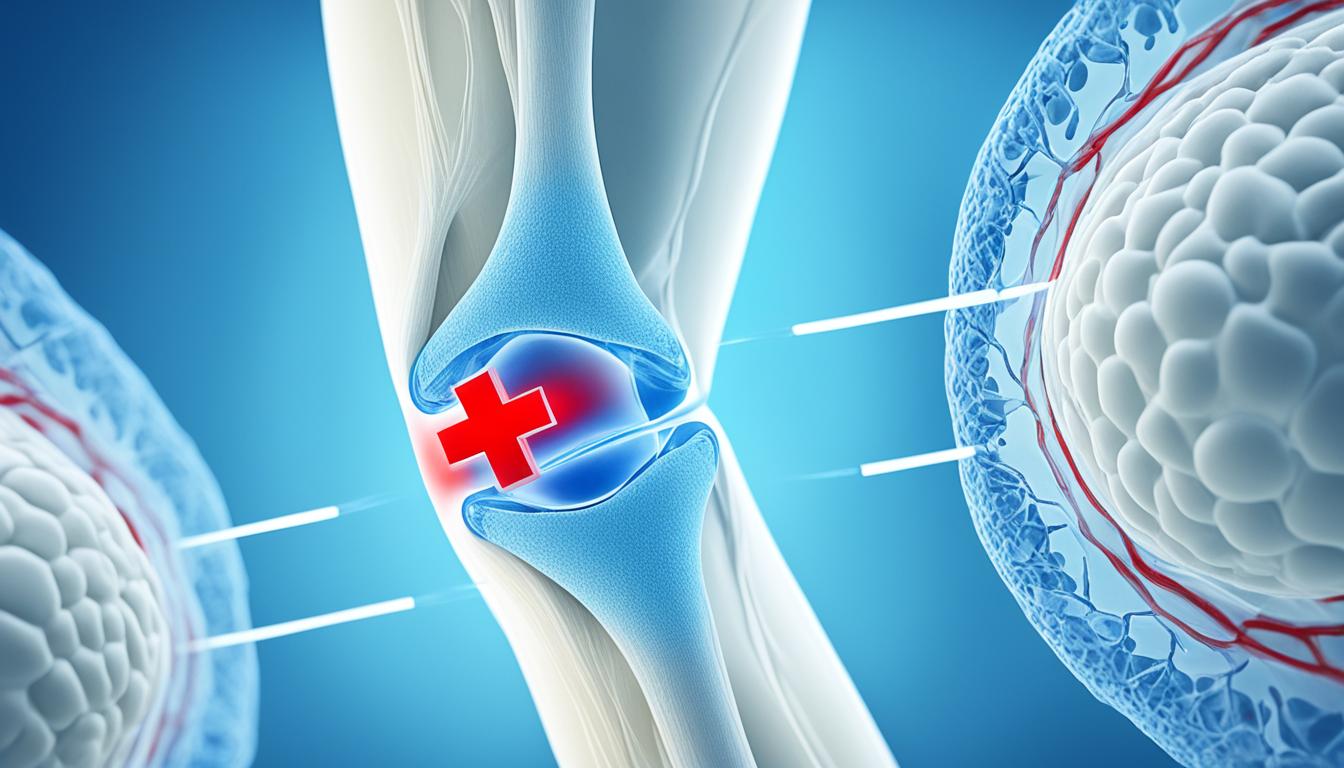Runner’s Knee, or Patellofemoral Pain Syndrome (PFPS), is very common. It causes pain in the front of the knee or around the kneecap. It happens to people who do activities that stress their knees, like running. Symptoms include dull pain, more pain when doing activities, less movement, swelling, and odd noises when you bend your knee.
Diagnosis of Runner’s Knee looks at things like the person’s health history, their age, and how much pain they feel. A physical exam and x-rays also help. Things that might lead to Runner’s Knee are using your knee too much, poor kneecap alignment, certain body shapes, weak knee muscles, and not using the right sports gear or training incorrectly.
Doctors treat Runner’s Knee with a mix of things. The RICE method (Rest, Ice, Compression, Elevation) can make the knee feel better and decrease swelling. They might also suggest NSAIDs to manage pain and swelling. Working with a physical therapist or using braces can make your knee stronger and more stable. In some cases, you might need steroid shots or surgery.
To avoid getting Runner’s Knee, there are a few steps to take. Stretch out before and after you run to warm up your muscles and make them flexible. Slowly stepping up your exercise lets your body get used to the work and lowers your chance of getting hurt. It’s very important to wear good running shoes that protect your knees. Keeping a good weight may also help save your knees from too much stress. Doing different types of exercise, like swimming or biking, and including warm-up, stretch, and strengthening moves in your exercise can also keep Runner’s Knee away.
Key Takeaways:
- Runner’s Knee, or Patellofemoral Pain Syndrome, causes pain in the front of the knee or around the kneecap.
- Symptoms include dull pain, increased pain during physical activities, decreased range of motion, swelling, and grinding sensation in the knee.
- Contributing factors include overuse of the knee joint, alignment problems, weak muscles, and improper training techniques.
- Treatment options include rest, ice, compression, elevation, NSAIDs, physical therapy, braces, injections, or surgery.
- Prevention involves stretching, gradual increase in activity, proper footwear, maintaining a healthy weight, cross-training, and specific exercises.
Stem Cell Therapy for Runner’s Knee – A Breakthrough Treatment Option
Stem cell therapy is a new way to treat bad knee pain from Runner’s Knee. It uses special cells to fix the knee’s damaged tissue. This can make the pain go away and help the knee work better.
These stem cells come from places like blood and bone marrow. They can make new cells, calm down swelling, and help your body heal itself. Because of this, surgery isn’t always needed.
The good thing about this treatment is you heal fast. You can get back to your normal life and sports sooner. There’s not much downtime.
Unlike surgery, stem cell therapy has fewer risks. Surgery risks include infection and blood clots. Stem cell risks are lower, like some pain and possibly a bit of swelling.
Plus, it can keep helping your knee for a long time. It makes new tissue in your knee and helps your knee feel better. It could let you do more without hurting.
Not everyone can get this treatment though. It depends on what a doctor says after they look at your knee. So, it’s important to see a doctor who knows about this kind of treatment.
In conclusion, stem cell therapy is changing how we deal with bad knee pain. It’s a better, safer, and faster way to help people with Runner’s Knee. It gives hope to those who suffer from this condition.
Conclusion
Runner’s Knee can really slow down someone who loves to be active. But, by treating it right and working to stop it, folks can get back in the game. The first steps in fixing Runner’s Knee include rest, using ice, wrapping the knee, keeping it up, and taking anti-inflammatory drugs. This helps with the pain.
It’s also smart to do physical therapy, use knee braces, and sometimes, have surgery. Doing these things can make getting over Runner’s Knee faster. Then, folks can do what they love again, like running.
Stopping Runner’s Knee is just as important. To do this, it’s good to stretch before and after you run. Also, you should build up how much you run slowly. Wear good running shoes, keep a healthy weight, and mix up your exercises. This means doing different types of activities, not just running.
Doing warm-up and strengthening moves focused on your knee can also help. These keep your muscles strong and your joints steady. This way, you lower the chance of getting Runner’s Knee again.
To beat Runner’s Knee and stay active, recovery and prevention are key. Taking care of yourself well is how you can bounce back and avoid getting hurt in the future. This includes rest, proper medicine, and staying active in a safe way.

